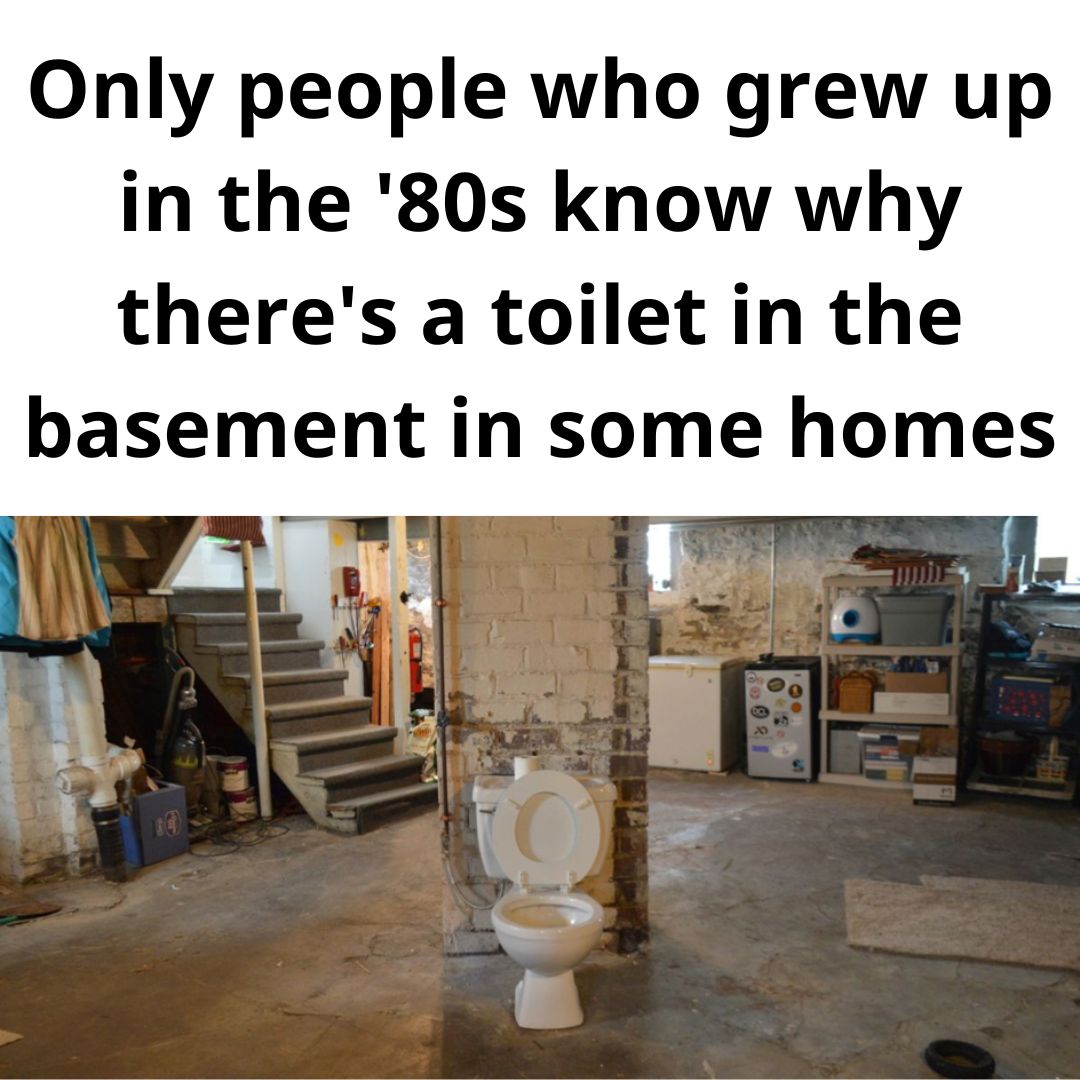Growing up in a house that had been standing for over a century meant getting used to all the charming oddities that came with age—like creaky hardwood floors, windows that rattled with every gust of wind, and a basement that always felt just a little haunted. Our basement was especially eerie: it had low light, damp stone walls, and a cool draft that never went away. But the strangest thing of all wasn’t the spooky atmosphere—it was the single toilet sitting all alone in the corner. No walls, no privacy, no accompanying sink—just a toilet, randomly plopped down on the basement floor like some forgotten relic. We never used it. We didn’t even talk about it. Still, I couldn’t stop wondering why it was there.

It wasn’t until I started restoring old homes as an adult that I realized our basement setup wasn’t unique. In fact, that weird basement toilet is a lot more common than you might think—especially in older homes built in the early 20th century in industrial cities like Pittsburgh. And as odd as it looked, that lonely toilet actually served a pretty clever and important purpose.
They’re often called “Pittsburgh potties,” named after the steel city where they were especially prevalent. These homes were built for blue-collar workers—steelworkers, miners, laborers—who came home every day covered in grime, soot, and sweat. Many of these houses had separate basement entrances that led directly from the backyard or alleyway into the basement. The idea was simple: the worker could enter through the basement, take care of business, clean up a bit, maybe even change clothes, and then head upstairs without dragging all that filth into the main living space.
The basement toilet wasn’t just a matter of convenience—it was a matter of hygiene. For families trying to keep their homes clean and respectable, especially in tight city neighborhoods where neighbors kept a close eye on each other, that mattered. And back then, showers weren’t as common as they are today. So even having a place to use the bathroom away from the rest of the house was considered an upgrade in some situations.
But the story behind these quirky toilets doesn’t stop there. There’s also a fascinating plumbing reason why these basement fixtures were installed. Before World War II, city sewer systems in places like Pittsburgh, Cleveland, and even parts of Canada were overwhelmed by the rapid pace of urban growth. These systems weren’t always equipped to handle the volume of waste during storms or periods of heavy use. When they failed—and they often did—sewage would back up into homes.
And here’s where the basement toilet came in handy. According to sources like the Calgary Real Estate Board, those basement toilets were usually located directly above where the sewer line entered the house. That made them the lowest point in the plumbing system. So, if a backup occurred, instead of raw sewage bursting into the bathrooms upstairs, it would emerge through the basement toilet. It acted like a pressure release valve, directing the overflow to the least damaging spot—on concrete basement floors rather than carpet, tile, or hardwood in a finished bathroom.
Of course, it still wasn’t pleasant. No one wants to deal with a sewage spill. But if you had to choose between cleaning up a mess in your basement or replacing an entire bathroom upstairs, the choice was obvious. In that way, the lonely basement toilet played an important role—not just in household cleanliness but also in early home flood control.
These days, most Pittsburgh potties are no longer in use. In many cases, they’ve been removed entirely. Others remain where they’ve always been—quiet, unused, and usually covered in a layer of dust. Some homeowners, embracing the character of their homes, have actually renovated their basements around the old toilet, turning them into full bathrooms or laundry rooms with a bit of historical flair. Others just leave them as is—a quirky talking point, a little mystery tucked away in the basement.
So if you ever walk into the basement of a historic home and spot a lone toilet sitting in the open, don’t assume it’s some bizarre design mistake. It’s a subtle but fascinating reminder of how working-class practicality and old-school plumbing shaped everyday life in American cities. That solitary toilet tells a deeper story about labor, cleanliness, and smart—if slightly strange—solutions to real problems. It may seem out of place today, but it once represented a clever blend of function and necessity that helped keep homes running smoothly during a very different time.





